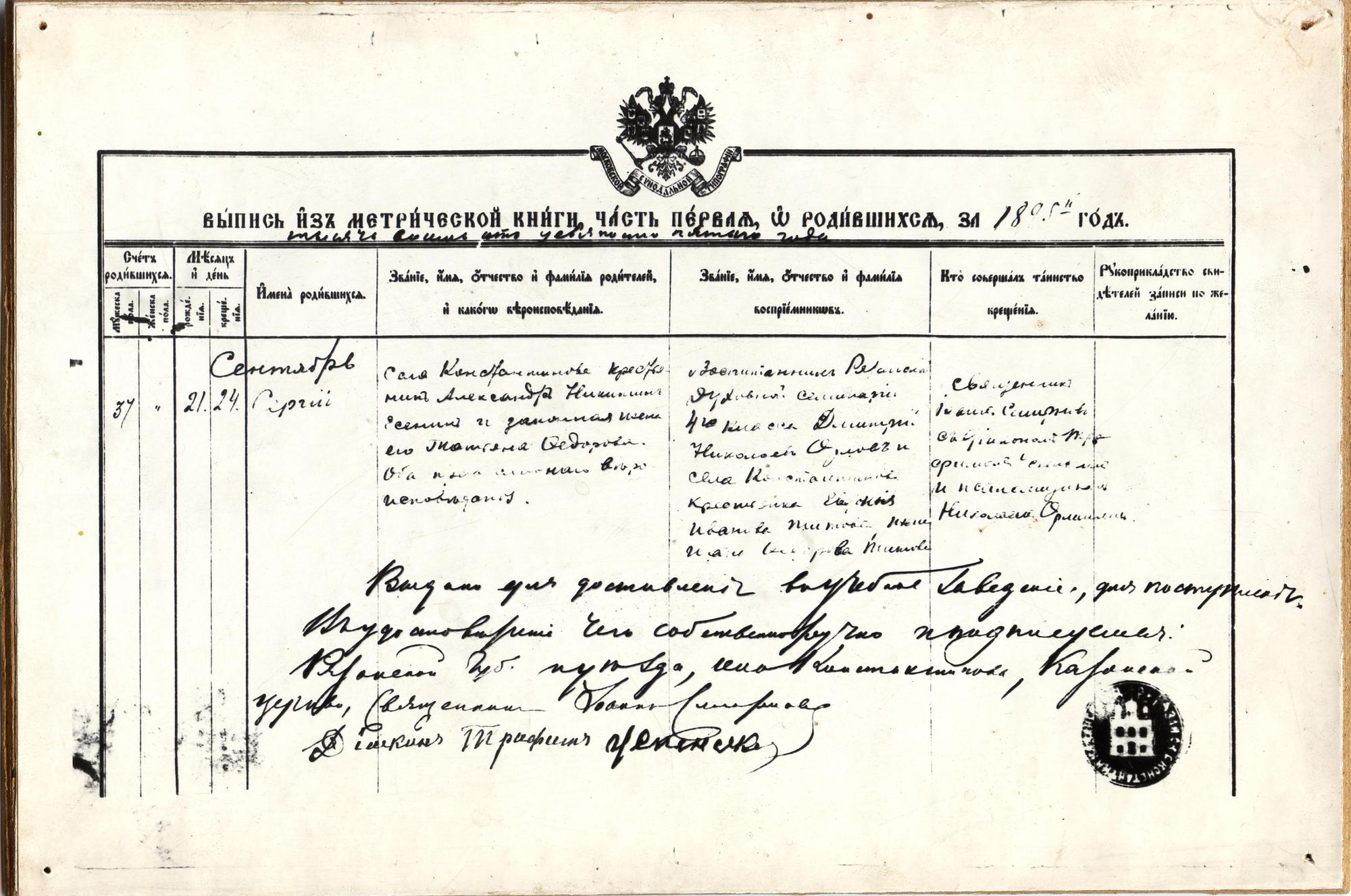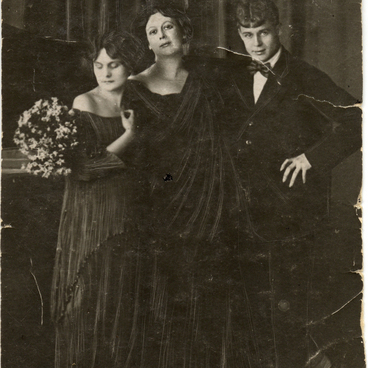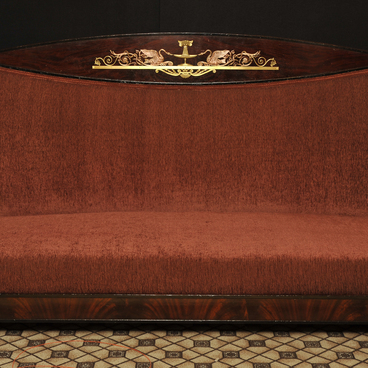The cradle was kept in the family of the Esenins’ neighbours and donated to the museum in 1981. In this cradle, little Sergei was rocked, and then his sisters Katya and Shura. In the drafts to his autobiography, Esenin wrote that he had “a childhood just like all rural children”.
The poet was proud of his peasant origins: “And that is me! Me, a citizen of the village, // Which is to be a famous one, // Because it”s here that a woman once gave birth // to a Russian scandalous poet”.
Maria Dorozhkina, a resident of the village of Konstantinovo, explained to a folklore researcher, Elena Samodelova, how children’s cradles were made: ‘They made such sticks, here there were these sticks, and there they hung those ones, and these ropes and bags went over there. And the springs — hang them from the ceiling. Here it is, the spring is swinging, so you rock the baby in the cradle.
Then it was lined up there. Once lined up, they put a small mattress — the baby lied in the cradle there. They used to line it up with some fabric: like this, they would line it up, like this, and he would lie there.’
The cradle was fixed to a ring which was firmly hammered into the matitsa (the ceiling beam). The main advantage of such cradles was that they could be hung not only in the house but also in the field or in the forest.
In the book ‘Anthropological Poetics of S. A. Esenin’ Ms Samodelova writes: ‘The image of the first baby cot is very significant for Esenin”s poetry and is denoted by various words, word combinations and descriptive expressions: it is a crèche and a boy’s crèche with a canopy, a zybka, a cradle…’.
Esenin mentions Zybka in some of his poems, for example, “Oh, Mother Mary…”. (“Spill like oil, The Moon”s hair// Into my country”s crèche…”), and the novel Yar: “There was the firstborn in the zybka, rubbing its red fists. “What a boy!” Epishka ran his crooked finger on the baby’s lips. ‘His eyes are just like Stepan’s.’
Anna took him out of the crib in her arms and began to change his napkins.
“What are you doing with your lips?” Epishka waved his head at the baby. “Are you hungry, sucker? I”m going to chew some bread for you.”
The poet was proud of his peasant origins: “And that is me! Me, a citizen of the village, // Which is to be a famous one, // Because it”s here that a woman once gave birth // to a Russian scandalous poet”.
Maria Dorozhkina, a resident of the village of Konstantinovo, explained to a folklore researcher, Elena Samodelova, how children’s cradles were made: ‘They made such sticks, here there were these sticks, and there they hung those ones, and these ropes and bags went over there. And the springs — hang them from the ceiling. Here it is, the spring is swinging, so you rock the baby in the cradle.
Then it was lined up there. Once lined up, they put a small mattress — the baby lied in the cradle there. They used to line it up with some fabric: like this, they would line it up, like this, and he would lie there.’
The cradle was fixed to a ring which was firmly hammered into the matitsa (the ceiling beam). The main advantage of such cradles was that they could be hung not only in the house but also in the field or in the forest.
In the book ‘Anthropological Poetics of S. A. Esenin’ Ms Samodelova writes: ‘The image of the first baby cot is very significant for Esenin”s poetry and is denoted by various words, word combinations and descriptive expressions: it is a crèche and a boy’s crèche with a canopy, a zybka, a cradle…’.
Esenin mentions Zybka in some of his poems, for example, “Oh, Mother Mary…”. (“Spill like oil, The Moon”s hair// Into my country”s crèche…”), and the novel Yar: “There was the firstborn in the zybka, rubbing its red fists. “What a boy!” Epishka ran his crooked finger on the baby’s lips. ‘His eyes are just like Stepan’s.’
Anna took him out of the crib in her arms and began to change his napkins.
“What are you doing with your lips?” Epishka waved his head at the baby. “Are you hungry, sucker? I”m going to chew some bread for you.”




